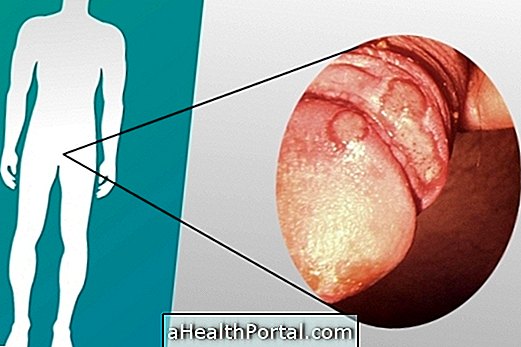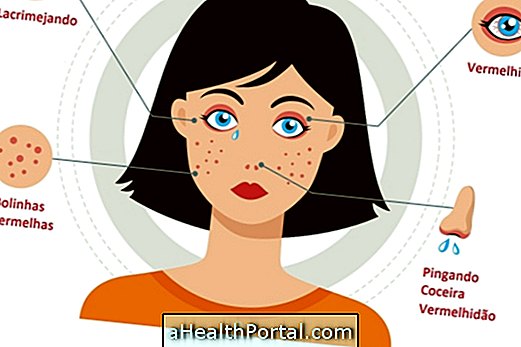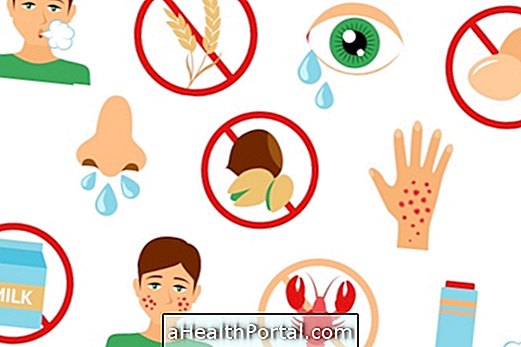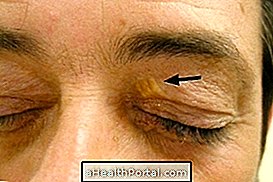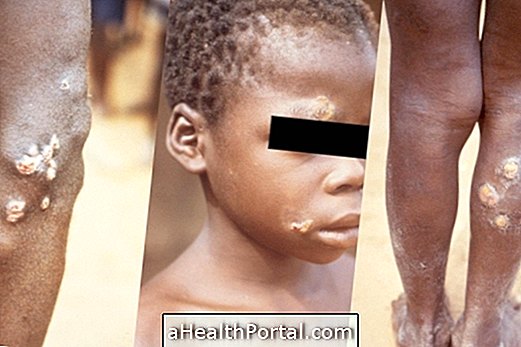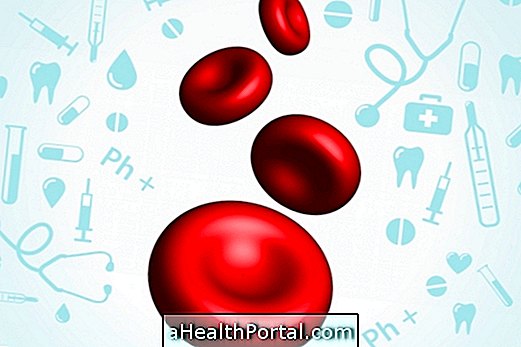The appearance of spots on the penis may seem like a frightening change, however, in most cases, it is not a sign of any serious problem, almost always being a natural change or appearing due to an allergy.
However, whenever the patches remain for more than 2 or 3 days, it is important to consult a urologist to see if any specific treatment is required, other than the normal hygiene of the intimate region.
It is only in very rare cases that the appearance of blemishes can indicate the development of cancer, and in such cases the development of small, non-scarring wounds is more common. Check out the 7 main symptoms of cancer in the penis.

1. Poor hygiene
This is the most common cause of the appearance of red spots on the glans penis and is usually related to poor hygiene of the intimate region. However, it can also happen in men who practice a lot of sports due to the excessive production of sweat that facilitates the growth of bacteria.
- What to do : It is important to maintain proper daily hygiene of the intimate region by washing with a mild pH soap and warm water. In the case of men with excessive sweat production, it may even be necessary to take two baths per day.
2. Allergy
The intimate region is a very sensitive body site, which can ignite due to contact with less natural substances such as soaps or creams, for example. In these cases, it is common for the glans penis to inflame, causing redness or red spots of different size.
In addition to products that can be used in the intimate region, many men may also be allergic to some types of tissue, especially when they are synthetic and do not allow breathing of the skin.
- What to do : Avoid using chemicals with too many chemicals in the intimate area, as well as prefer to wear cotton underwear, for example.
3. Candidiasis
In addition to poor hygiene and allergies in the penis, candidiasis is another major cause of red spots on the penis. Candidiasis is an infection by the yeast albicans fungus that causes the onset of red spots, swelling and intense itching of the penis.
Although it is more common in women, it can also happen in men, especially when the immune system is weakened due to an influenza or infection, for example.
- What to do : Candidiasis needs to be treated with the use of antifungal ointments, such as Fluconazole or Ketoconazole, in addition to proper hygiene. In more severe cases, it may be necessary to take anti-fungal tablets. Understand better how the treatment of candidiasis is made in man.

4. Use of antibiotics or anti-inflammatories
The use of anti-inflammatories, analgesics or antibiotics may have side effects that affect the intimate region. One of these effects is sometimes the development of reddish spots with a gray center on the penis. In these cases, small bubbles or darker areas may still appear.
- What to do: If you have started using a new medication, it is important to mention the appearance of the blemishes to the doctor, to assess the need to change medications.
5. Pearly Papules
Pearly papules are an inflammation of the Tyson glands below the head of the penis, and although it is more common to cause small white spines, there are men in whom this change is not very noticeable, and it is only possible to observe a clearer color change, being confused with small white spots.
- What to do : the papules are a benign change that does not need treatment, however, if it changes the aesthetics of the penis a lot, it is possible to discuss with the urologist the use of techniques such as cryotherapy or cauterization, for example.
6. Fordyce Beads
The granules can cause the appearance of small white spots or marbles on the head or body of the penis. This change is almost always benign and therefore should not be of concern, being more frequent during adolescence.
- What to do : You do not need any type of treatment, however, the urologist may indicate some creams with tretinoin that can eliminate these blemishes. See more about treatment of Fordyce beads.
7. Syphilis
Syphilis is a serious sexually transmitted disease that can cause changes in the penis. One of the first change is the development of a small lump that may be accompanied by a red, brown or dark spot.
Although this lesion may disappear after 4 to 5 weeks, it does not mean that the disease is cured, but rather that it is progressing to a more severe stage, in which it will affect the whole body. It is therefore important to start treatment as soon as possible. See more about the evolution of the disease.
- What to do : If syphilis is suspected, it is very important to go to the urologist immediately to confirm the diagnosis and start treatment with antibiotics such as penicillin.


